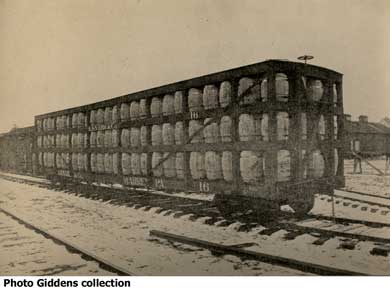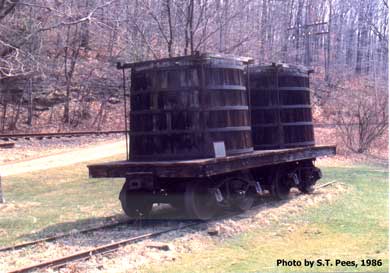 |
||||||
TANK CARS
In the U.S., the railroads provided the first reasonable means of getting oil to the seaboard from where it could be distributed to coastal refineries or shipped overseas. Knowing this, the railroad companies strove mightily to lay track into the hearts of the early producing centers where they could pick up the remunerative payloads.
At first, the railroads conveyed the oil in barrels on the beds of flat cars. Later, the barrels were racked in layers on specially built cars. The barrels gave way to the tank car, at first made of wood and soon after of metal. This was a tremendous boost to bulk transportation of petroleum and its refined products.
The great strength of the oil producing and refining industry was put to test many times during the growth of bulk transportation. Improvement and enlargement of the tank cars took place enabling them to carry a wide variety of liquids, even high pressure cargo such as liquefied petroleum gas (LPG).
In the first half of the twentieth century two world wars were fought, both requiring great amounts of gasoline and other fuels. Tank cars had to move as much as one million barrels daily to the U.S. East Coast alone during the height of WW II in Europe while the Pacific Theatre required 110,000 barrels (and more) per day during most of 1944 and 45 with a peak of 170,000 barrels. Tank cars had track priority during the war years.
Some of today's tank car builders can trace their lineage back to the 1870’s and later. A look at advertisements in the older oil journals show the proud names and pictures of the tank cars made under the trademarks of General American Tank Car Co., Union Tank Car Co., North American Tank Car Co., and many more.
|
||
|
||
|
![]()
| © 2004, Samuel T. Pees all rights reserved |
|


